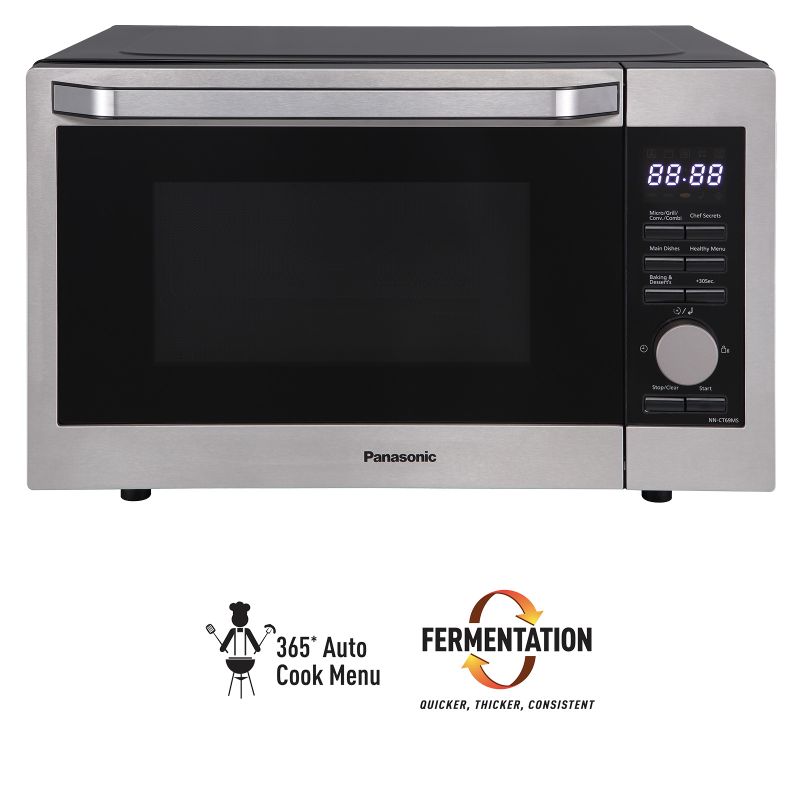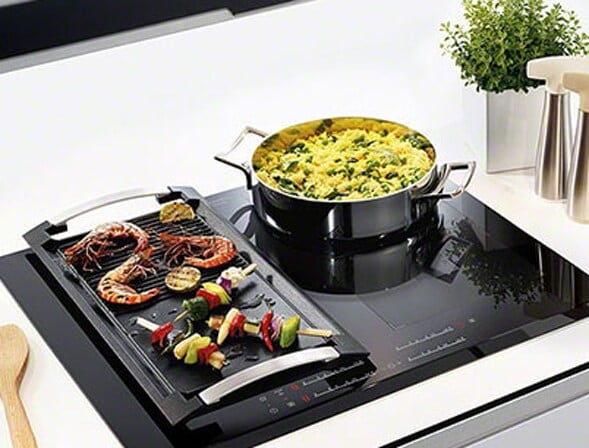Introduction
The microwave oven, often simply referred to as the microwave, is one of the most ubiquitous and convenient kitchen appliances in modern homes. Its ability to quickly heat, cook, and reheat a wide variety of foods has made it an indispensable part of our daily lives. In this blog post, we’ll explore the history, technology, uses, and advantages of microwave ovens. Whether you’re a busy professional, a parent looking to streamline meal preparation, or simply someone who loves the convenience of fast cooking, this guide is for you.
History of the Microwave Oven
Before we delve into the modern marvel that is the microwave oven, it’s important to understand its fascinating history. The concept of microwave heating can be traced back to the early 1940s when scientists were experimenting with radar technology during World War II. Dr. Percy Spencer, an engineer at Raytheon Corporation, stumbled upon the idea of using microwave radiation to heat food. His accidental discovery led to the first microwave oven, known as the “Radarange,” which was released in 1947.
At the time, these early microwave ovens were enormous and prohibitively expensive, making them accessible only to industrial and commercial enterprises. It was not until the late 1960s that countertop microwave ovens were introduced for home use, revolutionizing the way we prepare meals.
How Do Microwave Ovens Work?
Microwave ovens operate on a fascinating principle – they use microwave radiation to excite water molecules within food, generating heat by friction. This method of heating is incredibly efficient and rapid, which is why microwaves are known for their lightning-fast cooking times. Here’s a simplified breakdown of the process:
Microwave Generation: The microwave oven contains a magnetron, a device that generates microwave radiation.
Microwave Distribution: The generated microwaves are distributed into the oven’s cooking chamber.
Absorption by Water Molecules: The microwaves are absorbed by water molecules present in the food.
Friction and Heat: As the water molecules absorb the microwave energy, they begin to vibrate rapidly, creating friction and generating heat. This heat then cooks or reheats the food.
It’s worth noting that the uneven distribution of microwaves in the oven’s chamber can lead to uneven heating. To counter this, most modern microwave ovens feature turntables or rotating stirrers to ensure even cooking.
Uses of Microwave Ovens
Microwave ovens have an array of uses that go beyond reheating leftovers. Here are some common applications:
Reheating: The most obvious use of a microwave oven is reheating cold or leftover food. Whether it’s last night’s dinner or a cup of coffee that has gone cold, a microwave can quickly make them piping hot again.
Cooking: Microwave ovens can be used to cook a variety of foods, from vegetables and potatoes to popcorn and even baked potatoes. Some microwave ovens also have convection or grill features for more advanced cooking.
Defrosting: Defrosting meat, poultry, or frozen foods can be a time-consuming process if left at room temperature. A microwave oven can defrost food quickly and safely.
Steam Cleaning: Microwaving a bowl of water with a dash of vinegar can help loosen food splatters and make it easier to clean the interior of the microwave.
Heating Beverages: Quickly warm a cup of tea, coffee, or cocoa without the need to boil a kettle or use a stovetop.
Sterilizing: Some people use microwave ovens to sterilize kitchen sponges and dishcloths, which can harbor bacteria. Be cautious when doing this to avoid fires.
Melting and Softening: Microwave ovens are excellent for melting butter, chocolate, or softening ingredients like ice cream and cream cheese for baking.
Egg Cooking: You can poach or scramble eggs in a microwave with ease.
Advantages of Microwave Ovens
Speed: Microwave ovens are renowned for their incredible speed in heating and cooking food. They significantly reduce the time it takes to prepare a meal.
Efficiency: Microwaves are energy-efficient because they heat the food directly, reducing energy loss. They also use less power compared to stovetops and ovens.
Convenience: With preset cooking options and simple controls, microwave ovens are incredibly user-friendly. Anyone can use them with ease, even those who are not particularly skilled in the kitchen.
Preservation of Nutrients: Microwaves can help retain more nutrients in food compared to traditional cooking methods, as they cook quickly and expose the food to heat for a shorter period.
Space-Saving: Microwave ovens are compact and can be easily placed on countertops or mounted on walls, saving valuable kitchen space.
Tips for Using Microwave Ovens Effectively
While microwave ovens offer unparalleled convenience, there are some best practices to ensure you get the most out of this versatile appliance:
Cover Food: When reheating or cooking, covering the food with a microwave-safe lid or microwave-safe plastic wrap can help retain moisture and prevent splattering.
Stir or Rotate: To ensure even cooking, stir or rotate food halfway through the cooking time.
Use Microwave-Safe Containers: Only use containers and utensils labeled as microwave-safe to avoid potential chemical leaching.
Be Cautious with Metal: Avoid putting any metal objects in the microwave, as they can cause sparks and fires.
Pierce Foods: When cooking whole fruits or vegetables with tough skins, like potatoes or squash, be sure to pierce them with a fork to prevent explosions.
Monitor Cooking Times: Pay close attention to cooking times and be mindful of overcooking, as it can lead to a loss of quality and flavor.
The Future of Microwave Technology
As technology continues to advance, so do microwave ovens. Here are some innovations and developments to look out for in the future:
Smart Microwaves: Wi-Fi-enabled microwaves that can be controlled via smartphone apps are becoming more prevalent. These devices offer features like remote start, recipe suggestions, and real-time cooking updates.
Voice Activation: Some microwaves are integrating with voice assistant platforms like Amazon’s Alexa, allowing users to control their microwave with voice commands.
Advanced Sensors: Microwave ovens with sensors that can detect the type of food and adjust cooking times and power levels accordingly are on the horizon. This promises even more convenient cooking experiences.
Eco-Friendly Models: There’s a growing focus on designing microwave ovens that are more energy-efficient and use sustainable materials.
Conclusion
Microwave ovens have come a long way from their humble beginnings as massive, expensive appliances. Today, they are an integral part of our kitchens, offering unrivaled convenience, speed, and versatility. Whether you’re a professional looking to prepare quick meals between meetings, a parent juggling household responsibilities, or a student with limited cooking resources, the microwave oven is a reliable kitchen companion that has truly changed the way we cook and eat.
As technology continues to advance, we can expect even more exciting innovations in microwave ovens. These developments will further enhance their usability and make them an even more integral part of our modern lives. So, the next time you rely on your trusty microwave to prepare a meal in a matter of minutes, remember the incredible journey this humble kitchen appliance has taken to get to where it is today.




